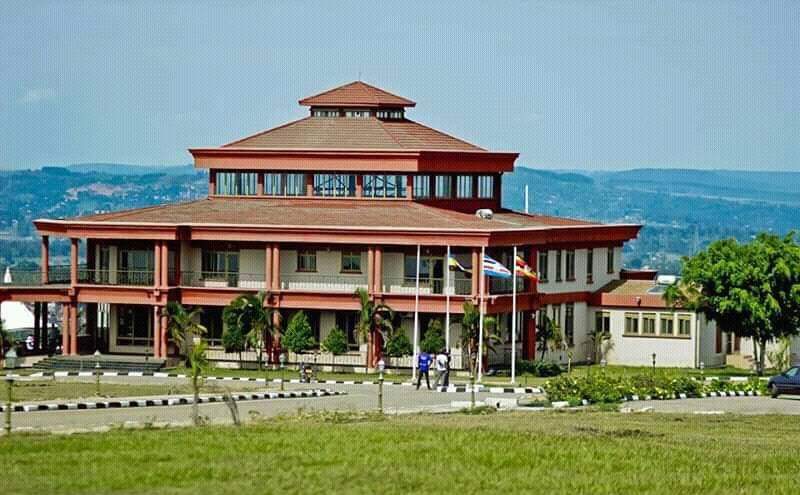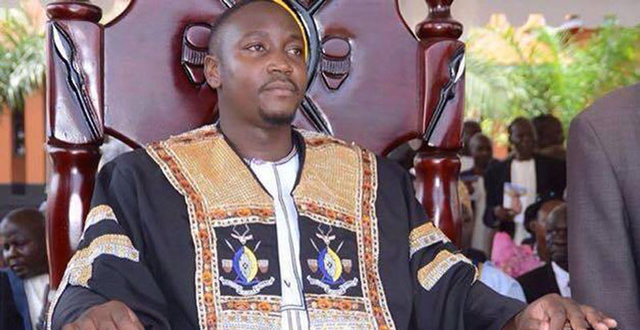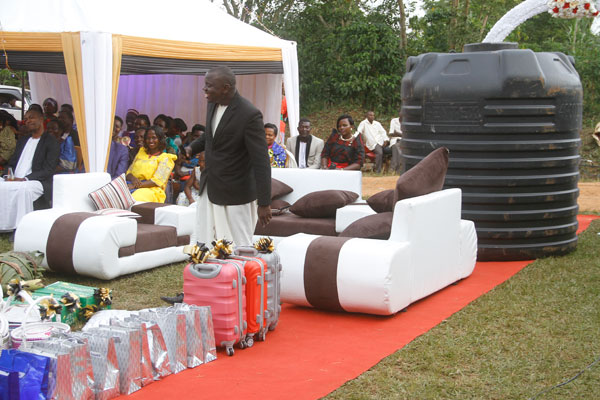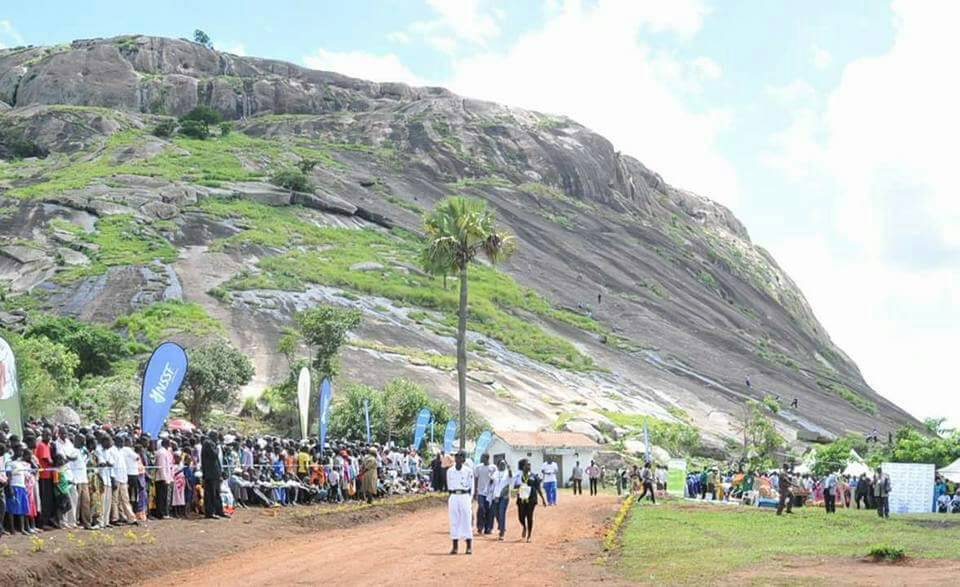The basoga and their culture
The basoga and their culture : As a traditional Bantu kingdom and cultural institution, Busoga works to raise the standard of living for its citizens and support their unity through development initiatives. This helps the Kyabazinga manage the day-to-day affairs of the Kingdom.

Busoga, which translates to “the land of Basoga,” is made up of eight districts: Jinja, Luuka, Kaliro, Mayuge, Iganga, Bugiri, and Busiki. Jinja serves as the region’s center of commerce and industry. The shallow Lake Kyoga to the north divides Busoga from Lango; the Victoria Nile to the west divides it from Buganda; Lake Victoria to the south divides Busoga from Tanzania and Kenya; and the Mpologoma River to the east divides it from smaller tribal groups like the Adhola, Bugwere, and Bugisu. It also comprises a number of Lake Victoria islands, including Buvuma Island.
The Kyabazinga
William Kadhumbula Gabula Nadiope IV, the grandson of Wilberforce Kadhumbula Nadiope, a former vice president and Kyabazinga of the Busoga kingdom, is the current IseBantu Kyabazinga who rules over Busoga. In 1995, the Ugandan government reinstated monarchy in accordance with Article 246(1) of the Ugandan Constitution. Henry Wako Muloki was restored as Kyabazinga Isebantu of Busoga on February 11, 1996.

Among Muloki’s accomplishments were initiatives for children, the elderly, the underprivileged, and girls’ education. The election of Edward Columbus Wambuzi, Muloki’s son, as Kyabazinga of Busoga was initially held by the Royal Chiefs of Busoga, but it was contested because there was not a quorum of at least eight chiefs. As a result, Gabula Nadiope IV was elected with ten out of eleven chiefs and was crowned on September 13, 2014.
Political organization
The 11 traditional chiefs of Busoga make up the Busoga Royal Council. The six tribe chiefs and the heads of five royal families.
| Title | Principality / Chiefdom | Head |
| Zibondo | Bulamogi | G. W. Napeera |
| Gabula | Bugabula | William Nadiope |
| Ngobi | Kigulu | Izimba Gologolo |
| Tabingwa | Luuka | W. Tabingwa Nabwana |
| Nkono | Bukono | C. J. Mutyaba Nkono |
| Wakooli | Bukooli | David Muluuya Kawunye |
| Ntembe | Butembe | Badru Waguma |
| Menha | Bugweri | Kakaire Fred Menya |
| Kisiki | Busiki | Yekosofato Kawanguzi |
| Luba | Bunha | Juma Munulo |
| Nanhumba | Bunhole | John Ntale Nahnumba |
Ceremony of Kwandhula/Introduction in Basoga
Kwandhula is performed as a highly orchestrated and directed drama, with each actor being required to be familiar with their specific character. A well-organized person must adhere to a set procedure whereby things happen in a predetermined order. An example of a standard kwadhula ceremony program in Buganda is as follows:

Abatambuze bali ku mulyango (the groom’s party must ask the “father’s mouth” for permission to enter the gate since they are regarded as “travelers and strangers” when they arrive).
Abagenyi Bayingidde (entrance inside the compound following authorization to do so)
Abaana balamusa – Abagenyi batudde (The guests are seated, and the bride’s siblings appear in a procession to welcome them.)
Abagenyi banyonyola ekibaleese, in which the guests narrate their mission via the “groom’s mouth,” who provides the context (ensonga) for their journey.
Ekyaleese kimanyibwa abagenyi (After being “ultimately found,” Senga Ow’ensonga, the aunt who invited the visitors, confesses and discloses the visitors’ purpose.)
Abagenyi baleeta enjogeza requires guests to offer the hosts a mouth or throat opener as a kind of “bribe.”
Okw’ogera ebikwaata ku mulenzi (the “groom’s mouth” reveals the accomplishments, ancestry, and family history of the groom)
Olukiiko lulamusa (The visitors are greeted individually by uncles, aunts, Jajjas, and “neighbors” in the gathering; the women kneel during each greeting) 31
Okw’ogera ku muwala ebikwaata (The bride’s achievements, ancestry, and family history are presented through the “father’s mouth”).
The “groom’s mouth,” Okusiima ebirabo, requests permission before giving gifts to the mother, father, muko, Ssenga, other aunts, grandparents, and other family members as a way of saying thank you for raising their lovely and bright daughter.
Mu nju okuyingira – okulya entaba luganda (A group of four or five people, including the groom and the “groom’s mouth,” enter the home for a private, ten to twenty minute briefing given by the uncles and aunts to formally recognize the groom as a “son”; water and roasted coffee beans are shared to “seal Oluganda.”
Okulya ekijjulo (the exchanges take on the tone of a family talk; the groom is accompanied by another team to dine inside the house, but not with the parents) is when the plans for the major feast are announced.
Obusiimo, empeta ne cake (this is the optional part of Ganda tradition; additional gifts, pictures, exchanging engagement rings, and cake cutting are all permitted during this period).
Okusibuula (After requesting permission to “go walk around and get to know the village,” the tourists depart for their house.
Things to Do in the Busoga Region
Budhumbula palace and shrine
Situated 2km from Kamuli on the Kamuli-Jinja road, the location features a shrine and the old home of William Wilberforce Kadhumbula Nadiope, the Kyabazinga who passed away in 1976. Other royal family members are interred in the marble-covered shrine, including Nasikombi and Yosia Nadiope, Nadiope’s mother and father. His mother, Yuliya Babirye Nadiope, who passed away in 2004, and son, Wilson Nadiope, a former minister of the Ugandan government, who died in 1991, are buried in the shrine as well. The main palace residence was presented in 1914 by the British colonial government, leaving it as a legacy.
Kagulu Rock
Under Mukama’s leadership, this was the Bunyoro Basoga’s first village. Despite the fact that Kagulu has a broad cultural influence, Kagulu Rock is a notable landmark. The two roads that split at the base of the rock and travel to Gwaya and Iyingo are situated between them. Steps make it easier for visitors to reach the top of the rock, which offers a clear view of practically all of Busoga. For a very long time, Eastern Uganda’s main adventure and tourism destination has been Kagulu Rock. Foreign NGO workers in the area used to be intrigued by Kagulu Rock, but since a local initiative was launched to market the location, it has become a major draw for visitors from all over.

Lake Victoria, the Bujjagali Falls, and the Nile’s source
John Speke found the source of the Nile, the second-longest river in the world, in Lake Victoria. It is a well-known tourist destination worldwide.
Lake Victoria, whose shoreline stretches from Jinja east to the Kenyan border, abuts southern Busoga. The Bujagali Dam flooded this old waterfall in November 2011.



